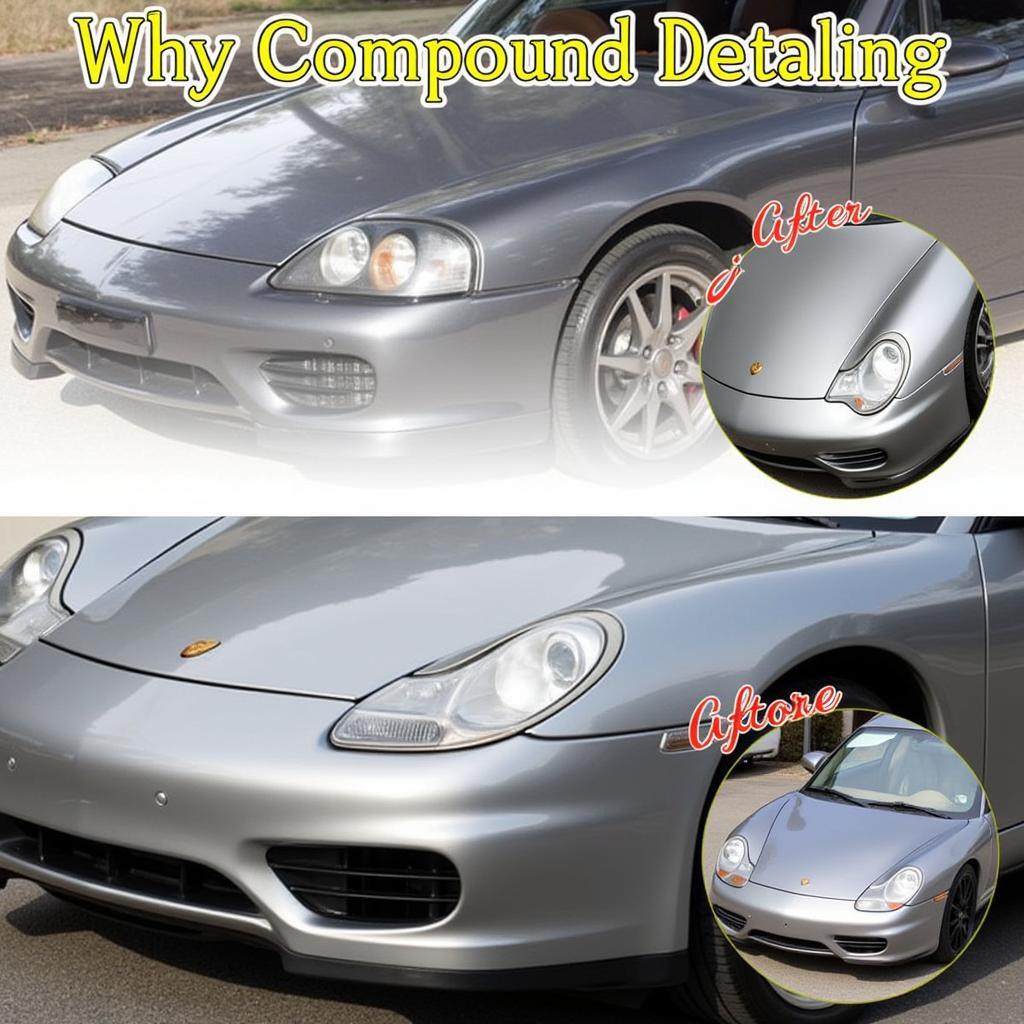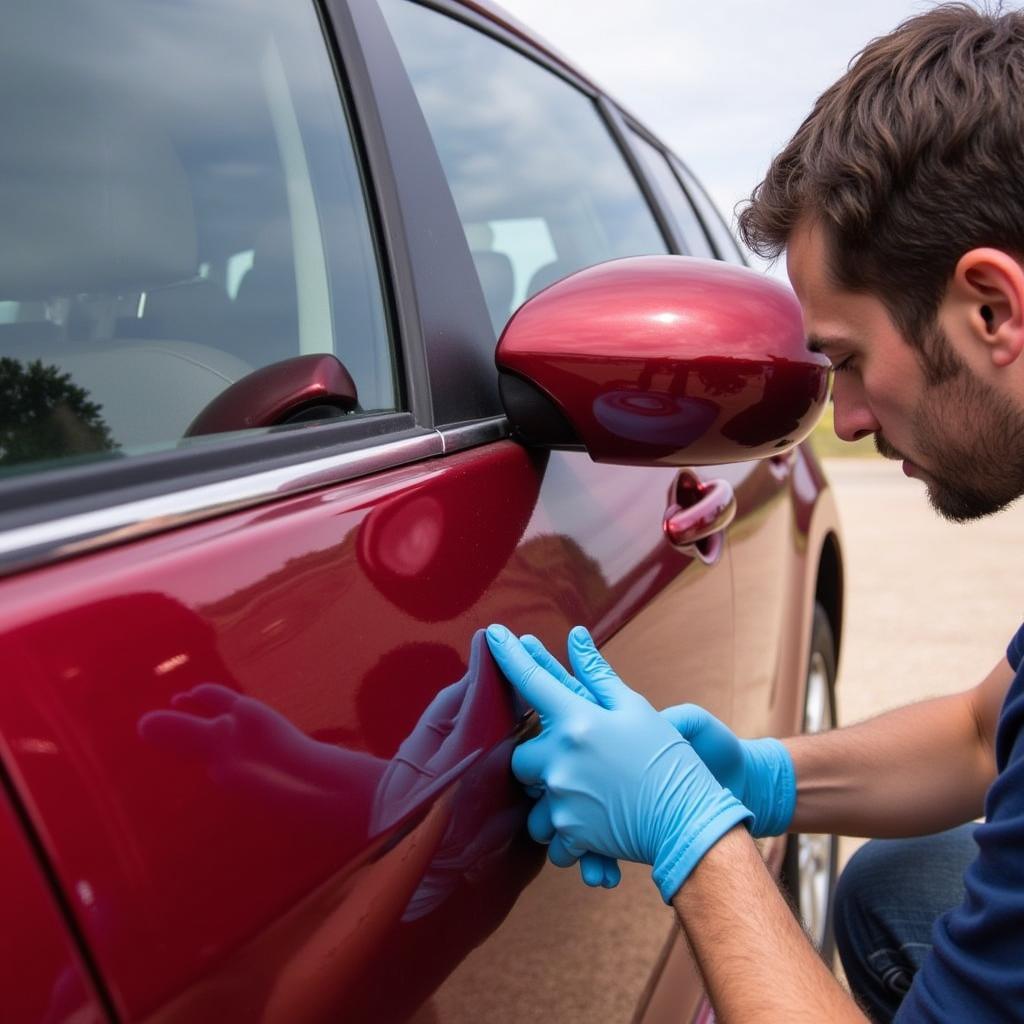Car detailing is a meticulous process that can dramatically enhance your car’s appearance and protect its paintwork. Compound detailing, a crucial step in this process, involves using an abrasive compound to remove imperfections like swirl marks and scratches. However, there are instances when skipping the compound detailing car is not only acceptable but also beneficial. Understanding when to bypass this step can save you time, money, and potential damage to your car’s finish.
Understanding Compound Detailing and Its Purpose
Compound detailing utilizes an abrasive material to level out the clear coat of your car’s paint, effectively removing imperfections. It’s a powerful tool for addressing deeper scratches and swirl marks, leaving behind a smooth and polished surface. However, this process also removes a small layer of clear coat. Overuse can thin the clear coat, making it vulnerable to UV damage and other environmental factors.
Scenarios When Skipping Compound is Advisable
There are several situations where skipping the compound detailing car is a wise decision:
- New or Well-Maintained Cars: If your car is brand new or you’ve consistently maintained its paint with regular washes and waxes, the clear coat is likely in excellent condition. Compounding might be unnecessary and could even introduce minor imperfections. Instead, focus on less abrasive techniques like polishing.
- Minor Imperfections: For light swirl marks or minor scratches, a less abrasive polish or a simple clay bar treatment might be sufficient. This approach minimizes clear coat removal while effectively addressing superficial imperfections. You can learn more about professional car detailing techniques in our guide on how to professionally detail a car.
- Before Selling/Trading-In: If you’re planning to sell or trade-in your car, and the paint is in reasonably good condition, skipping compound detailing might be a sensible choice. Focus on a thorough wash and wax to enhance the overall appearance without significant investment.
- Frequent Detailing: If you detail your car regularly, using a compound every time can unnecessarily thin the clear coat. Instead, opt for compound detailing every few years or only when deeper imperfections arise. Regular maintenance, such as described in how to detail a car like the pros, can prevent the need for frequent compounding.
 Skipping Compound Detailing on a New Car
Skipping Compound Detailing on a New Car
Alternatives to Compounding
- Clay Bar Treatment: This process effectively removes contaminants like dirt, tar, and bug residue, restoring smoothness to the paint surface without abrasion.
- Polishing: Using a polish can address minor swirl marks and scratches, enhancing shine and gloss without removing as much clear coat as compounding.
- Glazing: Glazes fill in minor imperfections, creating a smooth and reflective surface, further enhancing the paint’s appearance.
- Regular Washing and Waxing: This routine maintenance can prevent the buildup of dirt and grime, reducing the need for more aggressive detailing techniques like compounding. Learn how to achieve the best results in our article what is the best way to detail a car.
Assessing Your Car’s Paint Condition
Before deciding whether to skip compound detailing, carefully assess your car’s paint condition. Look for swirl marks, scratches, and other imperfections under direct sunlight. Run your hand over the surface to feel for any roughness or unevenness. This assessment will help you determine the appropriate detailing approach.
 Assessing Car Paint Condition Before Detailing
Assessing Car Paint Condition Before Detailing
When Compounding Is Necessary
While skipping compound detailing is sometimes beneficial, there are instances when it’s crucial:
- Deep Scratches and Swirl Marks: If your car has noticeable scratches or significant swirl marks, compound detailing is necessary to level the clear coat and achieve a smooth finish.
- Oxidized Paint: Oxidized paint appears dull and faded. Compounding can remove the oxidized layer, restoring the paint’s original shine.
- Preparing for Ceramic Coating: Before applying a ceramic coating, compounding is essential to create a flawless surface for optimal adhesion and long-lasting protection. This is similar to what dealerships do, as outlined in our article on what do dealerships do when they detail a car.
Conclusion
Knowing When To Skip The Compound Detailing Car is crucial for maintaining its paintwork’s long-term health and appearance. By understanding the purpose of compounding and assessing your car’s specific needs, you can make informed decisions about your detailing approach. Remember, regular maintenance and less abrasive techniques can often achieve excellent results without the need for aggressive compounding.
FAQs
- How often should I compound my car? Generally, compounding is recommended every few years or as needed to address deeper imperfections.
- Can I compound my car myself? Yes, but it requires careful technique and the right tools. If unsure, consult a professional detailer.
- What is the difference between compound and polish? Compound is more abrasive and designed to remove deeper imperfections, while polish is less abrasive and focuses on enhancing shine.
- How do I know if my car’s paint is oxidized? Oxidized paint appears dull, faded, and chalky.
- What is a clay bar treatment? A clay bar is used to remove contaminants embedded in the paint, creating a smooth surface.
- How can I maintain my car’s paint between detailing sessions? Regular washing and waxing can help prevent the buildup of dirt and grime.
- What should I do if I’m unsure about my car’s detailing needs? Consult a professional detailer for personalized advice.
For more information on car detailing, check out our guides on how to car detail.
Need help? Contact us via WhatsApp: +1(641)206-8880, or Email: [email protected]. Our customer service team is available 24/7.

Leave a Reply